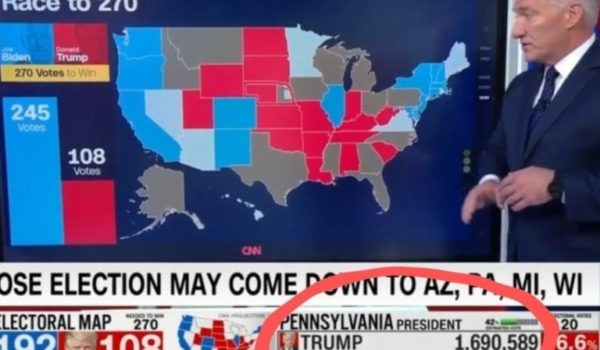
Yesterday, the Biden administration filed a motion asking an appeals court to dissolve another court’s stay blocking implementation of the Biden administration’s vaccine mandate for private employers. It claims to the federal appeals court in Cincinnati that the statutory and constitutional objections to the mandate are invalid. The Biden administration’s mandate demands that firms with 100 or more employees require them to be vaccinated against COVID-19 or wear face masks and submit to weekly testing.
The Occupational Safety and Health Administration (OSHA) issued that “emergency temporary standard” (ETS) three weeks ago. The federal appeals court in New Orleans temporarily blocked it on November 6, saying it raised “grave statutory and constitutional issues.” That court extended its stay on November 12, saying the ETS is “fatally flawed” because it “grossly exceeds OSHA’s statutory authority.” Last week, various challenges to the Biden administration’s rule were consolidated and transferred to the Cincinnati-based Sixth Circuit Court of Appeals, where the Biden administration is now asking judges to dissolve the other court’s earlier order.
The ETS option, which OSHA rarely uses, allows it to get around its usual rule making process, which typically takes years, by imposing regulations that take effect immediately upon publication. But to avoid the public notice, comment, and hearing requirements that ordinarily govern OSHA rules, OSHA has to first identify a “grave danger” to employees “from exposure to substances or agents determined to be toxic or physically harmful or from new hazards.” It also has to show the emergency standard is “necessary to protect employees from such danger.”
The New Orleans-based Fifth Circuit Court of Appeals said OSHA had failed to satisfy those statutory requirements. It added that the mandate “raises serious constitutional concerns.” The Biden administration claims the appeals court was wrong on both issues.
The administration’s motion relitigates the dispute about whether the COVID-19 virus counts as a “physically harmful agent” or a “new hazard.” The administration claims it is both, citing cherry-picked dictionary definitions, and the relatively recent discovery of the coronavirus, which “was unknown in the United States until early 2020.”
The Fifth Circuit Court of Appeals had disagreed, saying that was not recent enough to justify an emergency standard. It noted OSHA waited nearly two years before declaring a workplace emergency. The Biden administration claims changing circumstances, including company re-openings, the emergence of vaccines, and the new, more contagious delta strain, justify the government’s delay.
The Fifth Circuit indicated that OSHA’s mission is limited to hazards that are either unique to workplaces or especially serious there, as opposed to hazards that are “widely present in society.” It said COVID-19, a contagious disease that can spread anywhere people gather, falls into the latter category.
The government says that previously, “OSHA has required precautions for bloodborne pathogens, which can be contracted outside the workplace, and has long imposed workplace sanitation and fire rules, even though such concerns are not workplace-specific.” It argues that “workplace dangers have long been understood to include the dangers of contracting communicable diseases as a result of being in close proximity to other employees.” Finally, it claims that “COVID-19 is a particularly acute workplace hazard,” because “the nature of workplaces is that employees come together in one place for extended periods and interact, thus risking workplace transmission of a highly contagious virus.”
The Fifth Circuit criticized OSHA for issuing a “staggeringly broad” rule that failed to adequately consider variations in risk between industries, workplaces, and employees. The government says such tailoring is neither practical nor legally required.
The Fifth Circuit said OSHA’s 100-employee cutoff made the ETS “underinclusive,” a sign that OSHA was not actually motivated by a desire to promote workplace safety, as opposed to pursuing the Biden administration’s general goal of boosting the nationwide vaccination rate.
The Fifth Circuit also ruled that OSHA’s mandate raises potential problems under the constitutional nondelegation doctrine, which is supposed to protect the constitutional separation of powers by limiting lawmaking by federal agencies. The Biden administation objects that the nondelegation doctrine has almost never been used to overturn a congressional grant of power since the New Deal. All the doctrine requires is that such grants include an “intelligible principle” to guide agency action, a standard the administration believes is easily satisfied by the statutory criteria for an ETS.
The Fifth Circuit ruled that OSHA’s rule “likely exceeds the federal government’s authority under the Commerce Clause, because it regulates noneconomic inactivity [i.e., the individual decision to forgo vaccination] that falls squarely within the States’ police power.” The government says that’s the incorrect way to look at the mandate.
“Congress has long regulated companies engaged in interstate commerce in a variety of ways,” says the Biden administration’s motion to the Sixth Circuit Court of Appeals in Cincinnati. It says “the Supreme Court has upheld such regulations of employment conditions as within Congress’s commerce power.” The administration says the ETS “regulates employers who have affirmatively chosen to participate in interstate commerce” and “establishes conditions for employees’ safe participation in employment—an economic activity.” Like “many federal laws that regulate business conduct,” it argues, the standard “prescribes rules concerning how to engage in that commercial activity, and those rules sometimes require taking actions.”
The New Orleans-based Fifth Circuit Court of Appeals ordered that OSHA shall “take no steps to implement or enforce the Mandate,” which was scheduled to take full effect on January 4, “until further court order.” Because “the harms to the government and the public…of continuing the stay would be enormous,” the administration argues, the Cincinnati-based Sixth Circuit Court of Appeals should dissolve the stay entirely. Even if it does not dissolve the stay entirely, the administration says, the Sixth Circuit should limit the stay to the parts of the ETS dealing with vaccination, thus allowing the testing and masking requirements to take effect.



